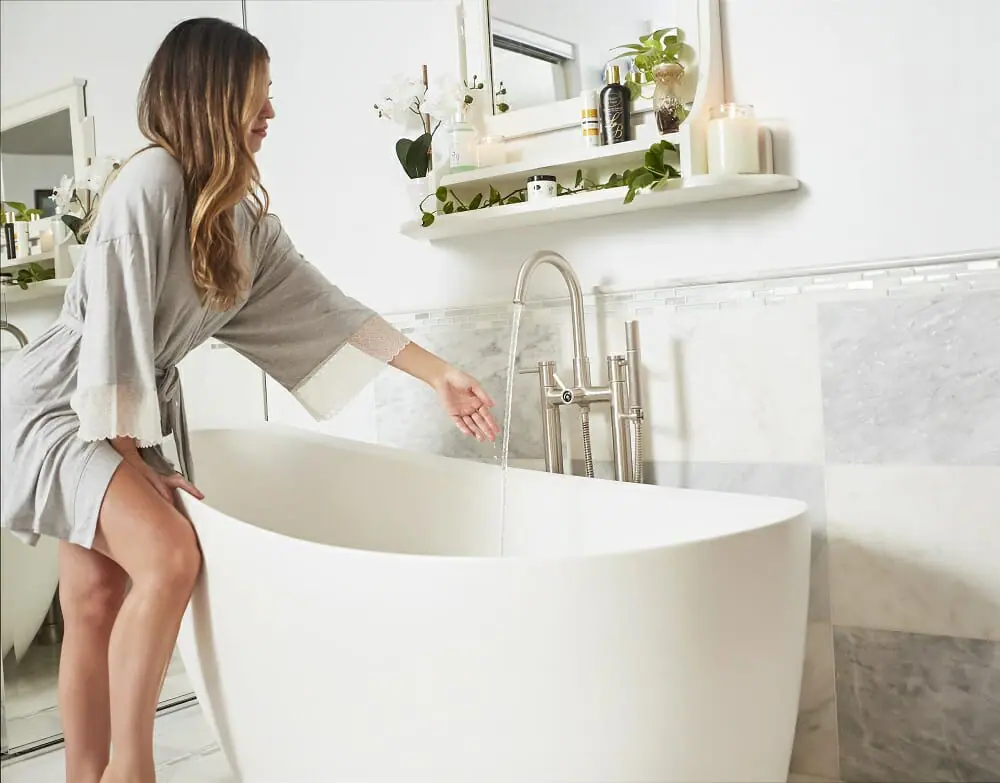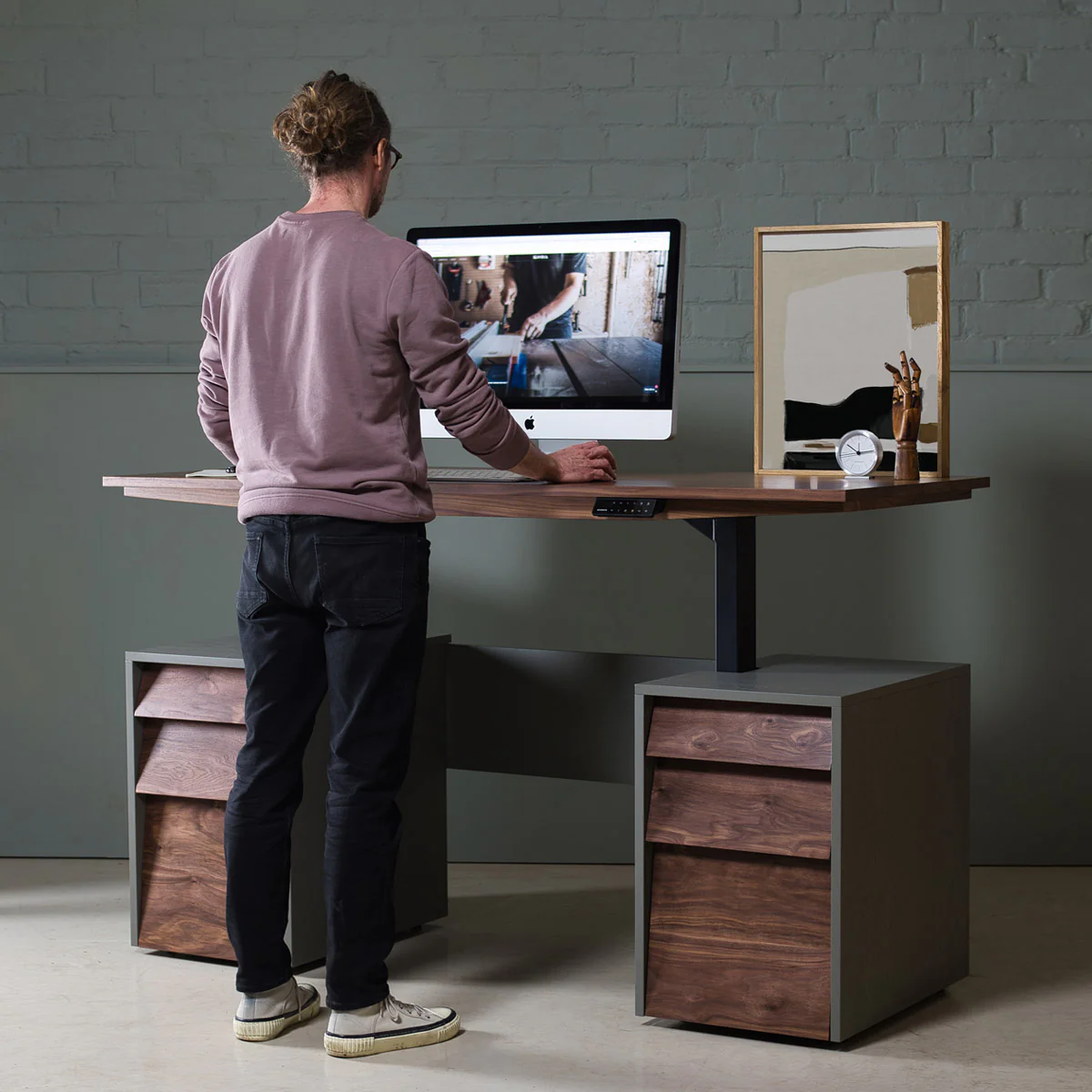In recent years, the best freestanding bathtub has become a centerpiece in modern bathroom designs, capturing the attention of homeowners and interior designers alike. Unlike built-in or alcove bathtubs, a freestanding bathtub stands independently, unattached to any walls or fixtures.
This standalone feature allows for greater flexibility in bathroom layouts and contributes significantly to the overall aesthetic appeal.
Freestanding bathtubs are celebrated for their timeless elegance and versatility. Available in a wide range of styles, materials, and sizes, these bathtubs can complement virtually any bathroom décor, from classic to contemporary. Their sculptural form often serves as a focal point, transforming the space into a luxurious retreat.
Whether placed in the center of the room or near a panoramic window, a freestanding bathtub elevates the ambiance, imparting a sense of opulence and relaxation.
Beyond their visual allure, freestanding bathtubs offer several functional advantages. They are generally easier to install compared to built-in models, as they do not require the extensive carpentry or tiling associated with alcove bathtubs.
Moreover, they provide flexibility in terms of placement, allowing homeowners to optimize their bathroom layout and make the most of available space. The variety in design also means that one can find a model that fits both large master bathrooms and more compact spaces.
In terms of bathing experience, freestanding bathtubs often provide deeper soaking depths, enhancing relaxation and comfort. The absence of surrounding walls also makes them easier to clean and maintain.
With their combination of aesthetic charm and practical benefits, it’s no wonder that the best freestanding bathtub continues to grow in popularity, becoming a highly desired feature in modern homes.
Types of Freestanding Bathtubs
When selecting the best freestanding bathtub for your home, it’s crucial to understand the variety of materials available. Each material offers distinct characteristics that influence durability, maintenance, and cost, helping you make an informed decision.
Acrylic: Acrylic bathtubs are popular for several reasons. They are lightweight, making installation easier, and come in a myriad of shapes and sizes. Acrylic is also resistant to chipping and cracking.
However, it can be susceptible to scratching and may require regular polishing to maintain its appearance. On the cost spectrum, acrylic tubs are generally affordable, making them an excellent option for budget-conscious buyers.
Cast Iron: Known for their durability, cast iron tubs are coated with a layer of enamel, giving them a glossy finish. These bathtubs are highly resistant to scratches and dents, ensuring longevity.
However, their substantial weight can make installation challenging and may necessitate additional floor support. Cast iron tubs can also be more expensive compared to other materials, but their durability and timeless appeal often justify the higher price.
Stone Resin: Stone resin bathtubs are a blend of natural stone and resin, offering a luxurious feel. They are highly durable, resistant to stains and scratches, and retain heat well, providing a warm and relaxing bathing experience.
However, they can be quite heavy and may require professional installation. Stone resin tubs tend to be on the pricier side, but their aesthetic appeal and durability make them a worthwhile investment.
Copper: Copper bathtubs are a unique choice, known for their distinctive appearance and antibacterial properties. They develop a natural patina over time, adding character to the bathtub. Copper is incredibly durable and retains heat efficiently.
However, these bathtubs are often the most expensive and may require occasional polishing to maintain their shine. Proper care is also needed to prevent discoloration from harsh chemicals.
Understanding the pros and cons of each material can guide you towards choosing the best freestanding bathtub that aligns with your aesthetic preferences, functional needs, and budget. Each material offers its own set of benefits, ensuring that there is an ideal option for every homeowner.
Design and Style Options
When it comes to selecting the best freestanding bathtub, one of the primary considerations is its design and style. Freestanding bathtubs offer a vast array of options to suit various tastes and bathroom aesthetics.
Among the most popular choices are classic clawfoot tubs, modern pedestal designs, slipper tubs, and Japanese soaking tubs. Each style brings its unique charm and functionality, making it essential to understand how they can complement different bathroom themes.
Classic clawfoot tubs are an enduring favorite, characterized by their elevated stature on ornate feet. These tubs exude a vintage appeal that can transform any bathroom into a timeless retreat. Perfect for traditional or Victorian-inspired spaces, clawfoot tubs often become the focal point, adding a touch of elegance and luxury.
For those who prefer a contemporary look, modern pedestal designs offer a sleek and minimalist aesthetic. These tubs rest on a solid base, giving them a clean and unobtrusive silhouette. Pedestal tubs are versatile enough to blend seamlessly into various decor styles, from industrial chic to modern minimalist.
Slipper tubs, with their high-back design, provide both visual appeal and comfort. The elevated backrest makes them ideal for lounging and unwinding after a long day. These tubs are particularly suitable for bathrooms that aim to create a spa-like ambiance, emphasizing relaxation and comfort.
Japanese soaking tubs, also known as Ofuro tubs, are designed for deep immersion. Their compact, yet deep structure allows for a full-body soak while taking up less floor space. These tubs are perfect for smaller bathrooms or for those who appreciate the Zen-like simplicity of Japanese aesthetics. They offer a unique bathing experience, promoting tranquility and relaxation.
By understanding the various design and style options available, you can choose the best freestanding bathtub that not only meets your functional needs but also enhances your bathroom’s overall aesthetic.
Whether you lean towards the classic charm of a clawfoot tub or the modern elegance of a pedestal design, the right freestanding bathtub can significantly elevate your bathing experience.
Size and Space Considerations
Choosing the best freestanding bathtub for your bathroom begins with careful consideration of size and space. It’s essential to measure the space where you plan to install the tub to ensure a perfect fit. Start by measuring the length, width, and height of the available area.
This will help you narrow down your options and avoid any mismatches that could disrupt the overall aesthetics of your bathroom.
While measuring, don’t forget to account for the plumbing. Ensure that the position of the drain and water supply lines align with the dimensions of the tub you’re considering. This will prevent any costly and time-consuming adjustments during installation.
Additionally, consider the surrounding space required for comfortable access and movement around the bathtub. A freestanding tub should enhance your bathroom’s appeal, not overwhelm it.
The depth and capacity of the bathtub are also critical factors. A deeper tub can offer a more luxurious and immersive bathing experience, but it may also require more water to fill. Make sure to evaluate the water capacity and how it aligns with your household’s water usage and heating capacity.
Ideally, a tub should be deep enough to allow for a full-body soak without compromising on comfort.
Another important aspect is the weight of the freestanding bathtub. Some materials, such as cast iron, can be extremely heavy and may require additional floor reinforcement. On the other hand, materials like acrylic or fiberglass are lighter and easier to install.
Assessing the structural integrity of your bathroom floor will help you make an informed decision on the best material for your freestanding tub.
By considering these size and space factors, you can ensure that the best freestanding bathtub you choose will not only fit seamlessly into your bathroom but also provide a comfortable and enjoyable bathing experience.
Installation and Plumbing Requirements

When it comes to installing the best freestanding bathtub, there are several critical factors to consider to ensure a seamless integration into your bathroom. One of the primary considerations is the plumbing requirements. Freestanding bathtubs often necessitate repositioning existing plumbing or installing new plumbing connections.
This can involve significant modifications, especially if the plumbing fixtures must be installed in a different location than the original bathroom layout.
Another key aspect is floor reinforcement. Freestanding bathtubs, particularly those made from heavy materials like cast iron or natural stone, can exert substantial weight on the floor. It is crucial to assess whether the bathroom floor can support this additional weight. Reinforcing the floor joists or adding extra support may be necessary to prevent any structural damage or sagging over time.
Potential challenges during the installation process can range from limited access to plumbing lines to ensuring that the bathtub sits level on uneven floors. It’s essential to address these issues proactively to avoid complications later.
One common challenge is ensuring that the drain line aligns perfectly with the bathtub drain outlet, which may require precise measurements and adjustments.
Deciding between hiring professional installers and opting for a do-it-yourself (DIY) approach is another important consideration. While a DIY installation might seem cost-effective, it requires a substantial amount of skill and knowledge in plumbing and construction.
Professional installers bring expertise and experience, ensuring that the installation is performed correctly and in compliance with local building codes. This can save time and potentially costly mistakes.
In summary, the installation of a freestanding bathtub involves careful planning and consideration of plumbing requirements, floor reinforcement, and potential installation challenges. Whether opting for professional installation or a DIY approach, ensuring these factors are addressed can result in a successful and long-lasting addition to your bathroom.
Maintenance and Care
Ensuring the longevity of the best freestanding bathtub requires diligent maintenance and care. A regular cleaning routine can prevent the buildup of grime and keep your bathtub looking pristine. It is recommended to clean your bathtub at least once a week.
For general cleaning, use a mild, non-abrasive cleaner specifically designed for bathtubs. Avoid using harsh chemicals or abrasive scrubbers, which can damage the surface and lead to scratches.
When it comes to specific materials, each requires tailored care. For acrylic bathtubs, a soft cloth or sponge paired with a gentle cleanser will suffice. Avoid ammonia-based products, as they can cause the acrylic to become brittle over time.
Cast iron bathtubs with enamel coatings should be cleaned with a mild dish soap and water solution. It’s crucial to dry the surface thoroughly after cleaning to prevent rusting.
Preventing common issues such as staining and scratching is vital. To avoid stains, rinse the bathtub after each use to remove soap scum and bodily oils. For tougher stains, a mixture of baking soda and water can be effective.
Apply the paste to the stain, let it sit for a few minutes, and then gently scrub with a soft cloth. For scratches, a specialized repair kit for bathtubs can be used to fill in minor surface imperfections.
Additionally, periodic deep cleaning is essential for maintaining the best freestanding bathtub. Fill the tub with warm water and add a cup of white vinegar. Let it sit for about 30 minutes before draining and rinsing thoroughly. This method helps to eliminate any mineral deposits and soap residue that regular cleaning might miss.
By following these maintenance and care guidelines, you can ensure that your freestanding bathtub remains a luxurious centerpiece in your bathroom for many years to come.
When considering the purchase of the best freestanding bathtub for your space, understanding the cost and budgeting aspects is crucial. The price of freestanding bathtubs can vary widely based on several factors such as material, design, brand, and additional features.
On average, the cost of a basic acrylic freestanding bathtub ranges from $600 to $1,500. However, for high-end models made from materials like cast iron, stone, or copper, prices can escalate to between $2,000 and $7,000 or more.
Beyond the initial purchase price, it is essential to account for additional costs linked to the installation of the best freestanding bathtub. These may include plumbing modifications, flooring reinforcement, and professional installation charges.
On average, installation costs can range from $500 to $1,500, depending on the complexity of the job and location of the installation. It’s advisable to obtain multiple quotes from certified professionals to ensure a fair price.
Long-term maintenance is another factor to consider when budgeting for a freestanding bathtub. While acrylic and fiberglass models are relatively low-maintenance, materials such as cast iron or natural stone may require periodic resealing or special cleaning agents to maintain their appearance and integrity.
Therefore, understanding the maintenance needs of your chosen material can help you anticipate future expenses and upkeep.
To get the best value for your money, consider a few budgeting tips. Firstly, set a clear budget range before shopping and stick to it.
Secondly, explore various retailers and online platforms to compare prices and look for seasonal sales or discounts.
Thirdly, consider the total cost of ownership, including installation and maintenance, rather than just the upfront purchase price.
Finally, investing in a high-quality freestanding bathtub from a reputable brand can offer long-term savings by reducing the need for repairs or replacements.
By carefully evaluating the cost and budgeting for all related expenses, you can make an informed decision and find the best freestanding bathtub that fits both your aesthetic preferences and financial constraints.
Top Freestanding Bathtubs in the Market
When it comes to selecting the best freestanding bathtub, the market offers a plethora of options, each boasting unique features and designs. Below, we present a curated list of some of the top freestanding bathtubs available today, complete with descriptions, key features, materials, price ranges, and customer reviews. This comparative analysis aims to aid you in making an informed decision.
1. Woodbridge B-0006
The Woodbridge B-0006 is a standout model known for its sleek, modern design. Crafted from high-quality acrylic reinforced with fiberglass, it offers exceptional durability and heat retention. Its double-walled construction ensures consistent water temperature, enhancing your soaking experience.
Key Features:
- Dimensions: 67″ L x 31 3/4″ W x 23″ H
- Material: Acrylic with fiberglass reinforcement
- Capacity: 60 gallons
- Price Range: $900 – $1,200
- Customer Reviews: 4.5/5 stars
2. Ove Decors Rachel
The Ove Decors Rachel bathtub is a prime choice for those seeking both aesthetics and functionality. This freestanding tub is constructed from premium acrylic, ensuring lightweight strength and ease of maintenance. Its contemporary design features a gentle slope for added comfort.
Key Features:
- Dimensions: 70″ L x 34″ W x 23″ H
- Material: Premium acrylic
- Capacity: 60 gallons
- Price Range: $1,000 – $1,500
- Customer Reviews: 4.7/5 stars
3. Wyndham Collection Melissa
The Wyndham Collection Melissa is celebrated for its elegant curves and spacious interior. Made from high-gloss acrylic, this bathtub offers a luxurious feel with lasting performance. It also includes an integrated overflow and pop-up drain for convenience.
Key Features:
- Dimensions: 71″ L x 34″ W x 24″ H
- Material: High-gloss acrylic
- Capacity: 75 gallons
- Price Range: $1,200 – $1,700
- Customer Reviews: 4.6/5 stars
4. Kohler Sunstruck
The Kohler Sunstruck freestanding bathtub combines modern design with unparalleled comfort. Its oval shape and ergonomic design make it a favorite among homeowners. Constructed from Lithocast resin, it provides a stone-like feel and remarkable durability.
Key Features:
- Dimensions: 66″ L x 36″ W x 23″ H
- Material: Lithocast resin
- Capacity: 57 gallons
- Price Range: $2,000 – $3,000
- Customer Reviews: 4.8/5 stars
5. American Standard Cadet
The American Standard Cadet is a versatile and practical option, perfect for both modern and traditional bathrooms. Made from durable acrylic, it offers easy cleaning and long-lasting use. Its deep soaking design provides a relaxing bathtime experience.
Key Features:
- Dimensions: 66″ L x 32″ W x 23″ H
- Material: Durable acrylic
- Capacity: 58 gallons
- Price Range: $800 – $1,100
- Customer Reviews: 4.4/5 stars
By reviewing these top choices, you can identify the best freestanding bathtub that fits your style, needs, and budget. Each model offers unique advantages, ensuring there’s an ideal option for every discerning homeowner.









